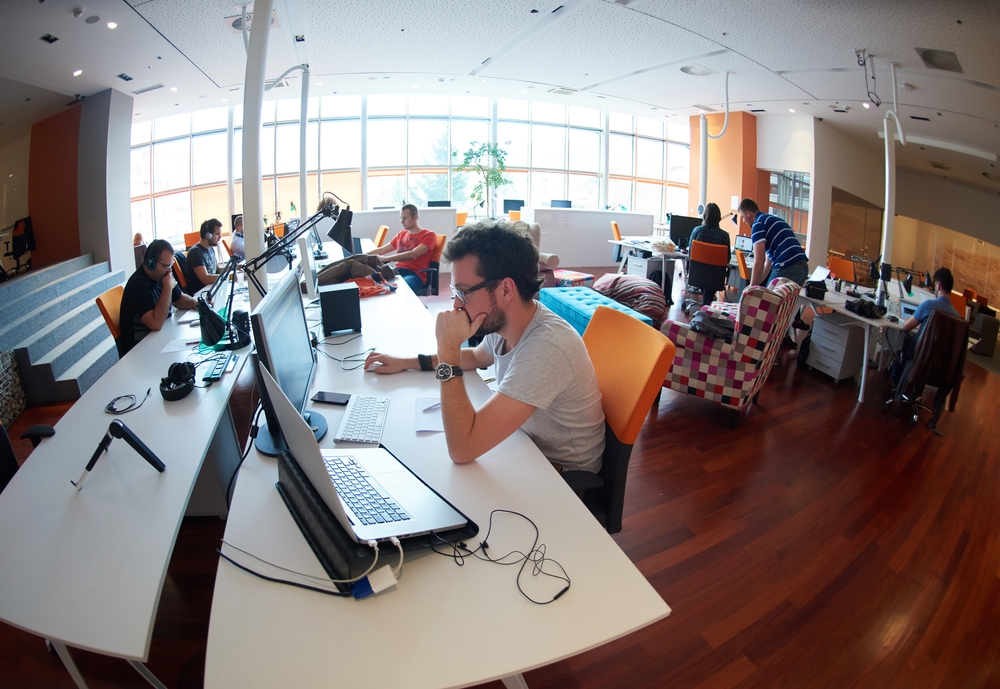You’ve seen the headlines and you’ve read the research – employee engagement isn’t where it needs to be and as a result turnover numbers are slowly rising. On the flip-side, companies with engaged and motivated team members are seeing higher profit margins, increased productivity and a more invested workforce.
It’s no surprise then that companies are pouring money into engagement initiatives. In fact, some data suggests that companies are collectively investing upwards of $1.5 billion a year into trying to improve engagement with development initiatives.
Offering career building options is a proven way to engage a wide range of employees.
One of these investments comes in the form of professional development initiatives. Offering career building options is a proven way to engage a wide range of employees. Setting up seminars for your team to further their knowledge or footing the bill for an industry conference are all great perks for your team members. These not only help them further their career but will ultimately improve their work within your business – sounds like a win-win to us.
It’s no real secret that professional development can drive engagement. Yet, despite all the investments, businesses don’t have much to show for it.
So, what’s going wrong with recent approaches to professional development? There are two overarching issues:
Problem No. 1: Leaders, managers, and even L&D and HR professionals don’t know their employees.
They don’t know what they care about, what matters most to them or what they pay attention to. This is the critical “homework” that has to be done before you start investing in development programmes. If you don’t work to understand what your employees need from a given programme first, they have a very small chance of succeeding.
Problem No. 2: The learning and development programmes are too ambitious
Too often high potential programs and similar initiatives designed to help people stretch beyond their comfort zones backfire because the people involved weren’t set up for success. The point is to get them to stretch, not to snap. Set realistic goals and achievable milestones for the most impact.
 Training programmes help to spark engagement on your team.
Training programmes help to spark engagement on your team.What can we do to improve professional development (and retention)?
1. Talk to your team
Work of any kind is primarily a mental activity, meaning the best way to get to know your employees is to start by understanding how they think. This is the filter through which they communicate, listen and process information. It influences how they approach a task and what kind of work they find stimulating (or draining).
Start by going straight to the source. If you want to create development plans that are going to engage your team members then you should start by asking them what they want out of company learning initiatives.
Hold regular brainstorming sessions to gather these ideas and after a given programme is completed conduct feedback sessions to understand where you can improve and what worked for your team.
2. Educate your team and ask the right questions
Effective and personalised learning can be delivered at scale. However, to get the flexibility, speed, learning and outcomes you and your employees need, you have to start by educating all learners about their learning and thinking styles, demonstrating that each has the ability to think and learn beyond their individual preferences. Only then can the participants “own” their learning objectives, take responsibility for their success and get the support to grow.
Here are some great questions to start with when building your next learning programme:
- What are our objectives – for the learners, for our team and for the business? Does the technology add value? Have we tested it? What will we track to measure success?
- What guidelines do we need to have in place? How will it work? What are the security or other implications?
- Who is our audience? How well does this respond to their needs? Are we helping them create successful learning paths and experiences vs. providing a repository of information?
- What’s our overall vision for self-directed, personalised learning? How can we challenge ourselves to look at learning design and delivery in new ways?
 When exploring personal development options, make sure to get the right feedback from your team.
When exploring personal development options, make sure to get the right feedback from your team.3. The Whole Brain® Angle
From research on the brain and learning, we know that it takes a lot of energy, motivation and passion for people to be successful in an area that requires them to think outside of their comfort zones. They can do it, but it takes considerable mental effort, and that needs to be recognised, acknowledged and integrated into the process.
That’s why we advise leaders and learning professionals to take a Whole Brain® approach as they put together their plans and consider questions like:
- From a thinking standpoint, what will our business require in the future?
- What are the implications in terms of the thinking needs of the employees we’re developing?
- How do the business’s needs and the individual employee’s aspirations intersect?
- What tools will help us meet these needs?
- How do we keep employees motivated through the challenges they’ll face?
- How do we translate all of this into appropriate development paths?
In many ways, it comes down to a question of alignment. When you can align your intended outcomes, agreed approaches and necessary resources you are much more likely to succeed in your professional development initiatives.
Keen to get started?
Are you ready to invest in strategic professional development initiatives to improve retention in your business? Herrmann is here to help, reach out to our team today to learn more about our Whole Brain® approach to upskilling.

